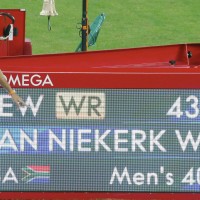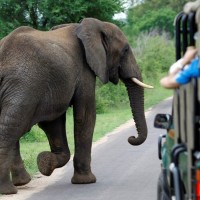Joo Havelange, who was president of Fifa from 1974 to 1998, has died in Rio de Janeiro aged 100

Joo Havelange, the Brazilian who reshaped the football world before his reputation was tainted by corruption scandals, has died aged 100 during a Rio Olympics that he helped secure and is taking place in a stadium once named after him.
It was Havelange who paved the way for the huge commercial exploitation of major sporting events including the Olympics and the World Cup but also for the lurid allegations of bribery and corruption that have dogged them ever since.
A former Olympic athlete, Havelange was an International Olympic Committee member from 1963 to 2011 and used his position at the head of the Brazilian FA (the CBF) during the golden period when his country won three World Cups between 1958 and 1970 to launch a bid for control of Fifa.
His campaign to oust Sir Stanley Rous as president marked a decisive moment in world sport. The Englishman was seen as fusty and out of touch, representative of a colonial old guard trying to maintain their grip on a global game, while Havelange ushered in a new way of doing business that mixed personal, political and corporate interests until they became indistinguishable.
With the help of Horst Dassler, the Adidas scion who founded the sports marketing agency ISL, and Fifas young secretary general, Sepp Blatter, Havelange oversaw an explosion in the governing bodys revenues as broadcasting and sponsorship deals rolled in.
Along the way, it has been alleged, he was one of a great many sports executives who shared in the proceeds. In 2010, the BBC produced a list of individuals, which included Havelange, who received bribes totalling $100m from ISL through front companies.
In death as in life, Havelange took centre stage. The news of his passing quickly dominated headlines overshadowing the Olympic triumph of Brazils first gold in the pole vault for Thiago Braz da Silva.
The tone was respectful but far from universally laudatory. While newspapers noted Havelange had massively expanded Fifa and its finances, they also focused on his corrupt practices, obsession with power and occasional quarrels with Pel.
In a piece titled The worst kind of politics, the influential columnist Juca Kfouri noted the behind-the-scenes deal-making of a figure who claimed to be free of ideological bias yet worked with Brazils military dictators and then built a global empire that was bigger than that of many nations or multinationals. Havelange did the worst kind of politics when he claimed to be apolitical and he used this to justify his close relationship with dictatorships around the world, whether it was in Africa and South America, Kfouri wrote. Its undeniable that he transformed Fifa into a great money-making machine and made football popular in the five continents. Unfortunately he did this with a family that even the Cosa Nostra [Italian mafia] has nothing on.
TV stations showed images of his life black-and-white photographs of him as a lawyer and member of the Brazilian Olympic team at the 1936 Berlin Olympics, as head of the Brazilian Football Confederation during a period when his country won the World Cup three times, and then as president of Fifa from 1974 to 1998, when the world football body expanded its reach with a system of patronage that strengthened his grip and left a legacy of corruption that continues to this day.
Allegations of bribe-taking dogged his career and his family. In 1993, his former ally Pel accused Havelanges son-in-law Ricardo Teixeira, the then president of the CBF, of corruption, a charge which was denied. Six years later a German newspaper reported Havelange had accepted diamonds and other gifts in connection with Amsterdams bid for the 1992 Olympics.
In 2006, the British investigative journalist Andrew Jennings told the Brazilian senate that Havelange may have built a fortune of tens of millions of dollars from bribes paid through a front company. He also revealed that a $1m bribe apparently meant for Havelange had crossed the desk of Blatter, who was later found by the Fifa ethics committee to have been clumsy rather than criminal in his handling of it.
In 2011, Havelange resigned from the IOC citing health concerns, the day before he was to appear before an ethics committee investigating claims that he received a bribe of $1m from ISL.
But his influence continues to be felt. Estado de So Paulo noted that Havelanges connection and ability to secure votes played a decisive role in securing the Olympics for Rio de Janeiro during the bidding competition. I invite you all to come to my city, to honour the Games, on my 100th birthday. I ask you to join me to realise this dream, he told delegates at the 2009 IOC meeting at which Rio was named the first South American city to host the Games.
On reaching his century on 8 May, he achieved that goal, though was too ill to take part in the Olympic torch relay that reached its conclusion in his home city of Rio. He died in the Samaritano hospital in the citys Botafogo district on Tuesday morning. The hospital did not disclose the cause of death, but local media said it was pneumonia.
Read more: https://www.theguardian.com/football/2016/aug/16/joao-havelange-president-fifa-ioc-dies












